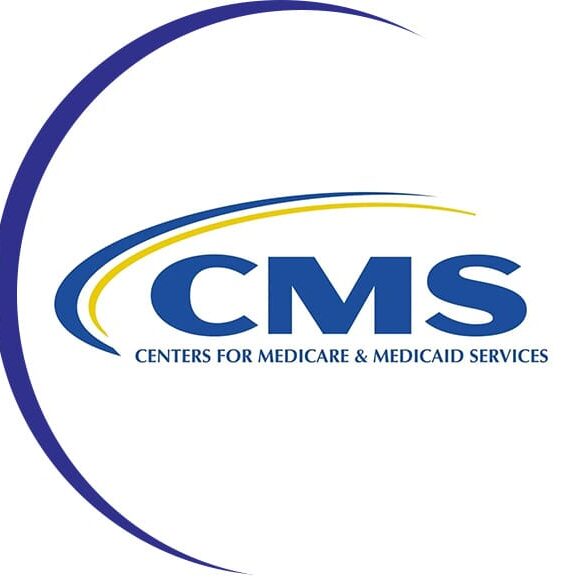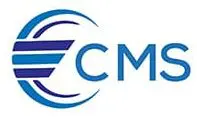
Our Mission
At Canyon Medical Supply, we are committed to providing high-quality medical and surgical supplies to healthcare professionals. Our mission is to help medical practices operate smoothly and effectively.
Our Products
At Canyon Medical Supply, we offer a wide range of medical and surgical supplies, from gloves and masks to wound care and durable medical equipment. Our products are sourced from reputable manufacturers and are of the highest quality.


Customer Service
At Canyon Medical Supply, we value our customers and strive to provide the best possible service. Our team is always available to answer any questions and address any concerns.
CONSULTING SERVICES
COMPLETE WOUND CARE ENTERPRISE CONSULTING
Canyon Medical offers complete wound care enterprise consultancy solutions to our providers. Most consulting services are provided complimentary to our customers and are dependent on specific needs – from start-ups to large multi-specialty practices, Health Plans, and Pharmacies.
Introducing consultant services for wound care physicians can be a pivotal step in enhancing the quality, efficiency, and profitability of wound care practices. The services provided by Canyon Medical can offer specialized expertise and support in various areas, including clinical management, coding and billing, business strategy, and technology utilization. Here's an outline of how our services can be introduced and the benefits they can provide:
1. Needs Assessment: We begin by conducting a thorough assessment of the wound care practice to identify areas where consultant services can be most beneficial. This might include evaluating clinical practices, billing and coding efficiency, staff training needs, and technological infrastructure.
2. Service Customization: Based on the needs assessment, we customize the consulting services to address the specific challenges and goals of the wound care practice. This could range from offering targeted advice on clinical care and treatment options to providing comprehensive practice management solutions.
3. Expertise in Coding and Billing: Canyon Medical Consultants offer specialized knowledge in wound care coding and billing, ensuring compliance with regulations and maximizing reimbursement. They can assist in navigating complex coding systems, including CPT, ICD-10, and HCPCS codes, and provide training to staff.
4. Clinical Management and Training: Our Consultants can provide guidance on best practices in wound care treatment, patient management, and new technologies or treatments in the field. They can also offer training and educational resources for the medical staff to improve clinical outcomes.
5. Business Strategy and Operations: Assistance in developing and implementing strategies to improve the operational efficiency and profitability of the wound care practice. This might include advice on marketing, patient acquisition, resource allocation, and cost management.
6. Technology Utilization: Canyon Medical Consultants can help in the selection and implementation of healthcare technologies such as Electronic Health Records (EHRs), telemedicine platforms, and wound imaging systems, optimizing their use for improved patient care and data management. Artificial Intelligence development and implementation are fully supported.
7. Regulatory Compliance and Risk Management: We provide guidance on complying with healthcare regulations and standards, reducing the risk of legal issues, and ensuring the practice adheres to industry best practices.
8. Marketing and Patient Outreach: Assist in developing effective marketing strategies to attract and retain patients, including digital marketing, community outreach, and patient education initiatives.
9. Continuous Support and Evaluation: Offer ongoing support and periodic evaluations of the practice to ensure that the consulting services meet the desired objectives and adapt to the changing needs of the practice.
By introducing our consultant services tailored to the unique needs of wound care physicians, practices can benefit from enhanced clinical care, improved operational efficiency, and increased financial performance. This strategic approach can lead to better patient outcomes, higher satisfaction, and a stronger competitive position in the healthcare market—contact Canyon Medical for more information.

CLINICAL PERFORMANCE
1. Overview of Local Coverage Articles and Billing and Coding Guidelines: Local Coverage Articles are educational documents published by Medicare Administrative Contractors (MACs). These articles often contain coding or other guidelines related to a Local Coverage Determination (LCD). Billing and Coding articles specifically provide guidance for the related LCD and assist providers in submitting correct claims for payment. These articles typically include CPT/HCPCS procedure codes, ICD-10-CM diagnosis codes, as well as Bill Type, Revenue, and CPT/HCPCS Modifier codes. The articles explain which services the related LCD applies to, the diagnosis codes for which the service is covered, or for which the service is not considered reasonable and necessary and, therefore, not covered.
2. Specific Wound Care Coding Examples: In the context of wound care, there are specific codes that are commonly used. For example, the CPT code 17250 is used for the chemical cauterization of granulation tissue, a service increasingly reported by family physicians in nursing facility settings. This procedure involves the application of chemicals such as silver nitrate to excessive healing tissue known as proud flesh or granulation tissue. It may include the removal of loose granulation tissue and subsequent hemostasis.
- Evaluation and Management (E/M) Codes: These codes capture the work performed during patient visits for assessment, diagnosis, and treatment planning. They include codes like 99202, 99203, 99204, and 99205, which provide a standardized method for reporting medical services, ensuring accurate documentation and appropriate reimbursement.
- Wound Preparation Codes: These codes involve the cleansing, debridement, and application of appropriate dressings to promote healing. Examples include 15002, 15003, 15004, and 15005. They ensure proper documentation and reimbursement for the work performed during these procedures.
- Wound Closure Codes: These codes are used to report the procedures performed to close wounds, such as suturing, stapling, or adhesive application. They include 12001, 12002, 12004, 12031, and 12032 and are crucial in documenting and billing for wound closure procedures.
- Surgical Excision and Repair Codes: These codes capture procedures involving the removal of tissue and subsequent closure or reconstruction. Codes such as 11000, 11042, 12001, 12031, 13100, and 14040 are used in this category, providing a standardized method for reporting surgical interventions.
- Skin Substitute Codes: These codes are used to bill the application of skin substitutes, which are crucial in wound care for covering wounds that are difficult to heal. Codes like 15271, 15272, 15275, 15276, 15277, and 15278 allow healthcare providers to report and bill accurately for these specialized products.
3. Debridement Coding and Medicare Payment: Other important codes include 97597, 97598, and 97602, which describe more extensive services than 17250. These codes are used for debridement, which involves removing devitalized and/or necrotic tissue to promote healing. For instance, code 97597 involves cleansing the wound thoroughly and removing proteinaceous slough, fibrin, and debris covering the wound bed until healthy tissue is visualized. It's important to note that chemical cauterization to achieve wound hemostasis (code 17250) is included in these procedures and should not be reported separately for the same lesion.
4. Medicare Payment Considerations: Correctly coding wound care services is vital due to the different ways Medicare pays for such services. For example, Medicare Part A covers stays in skilled nursing facilities, including medical services and room and board. In contrast, Part B non-covered stays still cover certain medical services but not room and board. Specific services, like CPT code 17250, are excluded from consolidated billing and, therefore, separately reportable. In contrast, CPT codes 97597 and 97598 are subject to consolidated billing. Clinicians must use the code that accurately identifies the service performed, per CPT guidelines, and this selection should always be supported by clinical documentation in the medical record.
Understanding and applying these codes accurately is crucial for healthcare providers to ensure appropriate payment and avoid potential allegations of fraud or abuse, especially when it comes to Medicare patients.
FINANCIAL PERFORMANCE
Financial performance expectations for physicians providing wound care can vary based on several factors, including revenue sources, cost management, and documentation practices. Here are key aspects to consider:
1. Understanding Revenue Sources: In outpatient wound care, revenue primarily comes from wound net and hyperbaric net revenue per visit. The revenue should be driven by procedures generated from a provider-based clinic with a lower percentage of Evaluation and Management (E&M) level charges. Hyperbaric oxygen (HBO) revenue comes from the facility fee charged for each hyperbaric visit. It's important for the program to be sustainable based on these two revenue streams and not dependent on inconsistent revenue sources like cellular tissue products.
2. Controlling Supply Expenses: Supplies for wound care include advanced wound care dressings, total contact casts, and cellular tissue products. For outpatient care, most dressings are bundled into the cost and not independently reimbursable. However, costs can quickly escalate, especially for products like cellular tissue products. An effective evaluation of cost versus efficacy for all products is essential.
3. Regular Review of Documentation: Documentation in wound care is heavily regulated by Medicare and private payers. Rigorous documentation guidelines have been established, with payers scrutinizing the utilization of therapies like hyperbaric oxygen therapy and cellular tissue products. Regular documentation reviews are recommended, ideally occurring before billing processes begin. Consistent and accurate documentation by providers and nursing staff is crucial.
4. Average Salary of Wound Care Physicians: As of November 24, 2023, the average salary for a wound care physician in the United States is $300,299 per year, with an average hourly rate of $144. The average bonus reported is $14,054. https://www.erieri.com/salary/job/wound-care-physician/united-states
5. Profitability in Wound Care: Wound care can be profitable in various categories, such as dressings, negative pressure, support surfaces, pneumatic pumps, compression, and nutrition. For example, in negative pressure wound therapy, the pump (a rental product) is a major revenue source. The Medicare fee schedule for this can vary, and the average length of stay for one patient is approximately 45 days. Profitability calculators are available to estimate revenue based on product cost and reimbursement rates, helping to determine gross margins and financial viability.
The Centers for Medicare & Medicaid Services (CMS) uses Current Procedural Terminology (CPT) codes for billing purposes, including those related to wound care. CPT codes are developed by the American Medical Association and are used extensively for billing a wide range of medical services. Here are some common CPT codes relevant to wound care:
1. Evaluation and Management (E/M) Codes: These codes are used for patient visits and consultations. In the context of wound care, they might be used for initial assessments, follow-up visits, and treatment planning. Common codes include 99202, 99203, 99204, and 99205.
2. Wound Debridement Codes: These codes are used to bill for the removal of necrotic, infected, or dead tissue to promote healing. Examples include:
- 97597: Debridement (e.g., high-pressure waterjet with or without suction, sharp selective debridement with scissors, scalpel, and forceps), open wound, including topical application(s), wound assessment, and instruction(s) for ongoing care, per session.
- 97598: Each additional 20 sq cm, or part thereof (list separately in addition to code for primary procedure).
3. Wound Closure Codes: Used for procedures that involve closing wounds using sutures, staples, or adhesives. Common codes include:
- 12001-12018: Simple wound repair codes, varying by the size and complexity of the wound.
4. Skin Substitute Application: These codes are for the application of skin substitutes and grafts. Examples include:
- 15271-15278: Application of skin substitute graft codes, varying by size and location of the application.
5. Negative Pressure Wound Therapy (NPWT): These codes are used for services involving NPWT. Common codes include:
- 97605: Negative pressure wound therapy (e.g., vacuum-assisted drainage collection), including topical application(s), wound assessment, and instruction(s) for ongoing care, total wound(s) surface area; less than or equal to 50 square centimeters.
- 97606: Greater than 50 square centimeters.
6. Hyperbaric Oxygen Therapy (HBO) Codes: These codes are for HBO therapy, a treatment in which a patient breathes 100% oxygen while inside a pressurized chamber, commonly used in wound care.
- 99183: Physician or other qualified health care professional attendance and supervision of hyperbaric oxygen therapy per session.
It's crucial for healthcare providers to stay updated with the latest CMS guidelines and billing instructions, as CPT codes can be updated annually. Accurate coding is essential for proper reimbursement and compliance with healthcare regulations. For the most current and detailed information, it's recommended to refer to the latest CMS publications or the American Medical Association's CPT code resources.
In conclusion, the financial performance of physicians in wound care depends on a combination of accurate billing and coding, effective management of costs, and regular review of documentation practices. The average salary indicates a substantial earning potential in this specialty. However, profitability requires strategic management of resources and an understanding of the billing and reimbursement landscape.
CMS 2024 Reimbursement Updates
The Centers for Medicare & Medicaid Services (CMS) has announced several key changes to the Medicare Physician Fee Schedule (PFS) for calendar year (CY) 2024:
1. Reduction in Payment Rates: Overall payment rates under the PFS will be reduced by 1.25% compared to CY 2023. However, there will be significant increases in payment for primary care and other direct patient care services. The final CY 2024 PFS conversion factor is $32.74, a decrease of $1.15 (or 3.4%) from the CY 2023 conversion factor.
2. Training for Caregivers: CMS is finalizing a proposal to make payments when practitioners train caregivers to support patients with certain diseases or illnesses (e.g., dementia) as part of the patient’s individualized treatment plan or therapy plan of care. This initiative aims to improve support for persons with Medicare by better training caregivers.
3. Services Addressing Health-Related Social Needs: CMS is finalizing coding and payment changes for services that address health-related social needs. This includes Community Health Integration Services, Social Determinants of Health (SDOH) Risk Assessments, and Principal Illness Navigation Services. These services, especially involving community health workers, care navigators, and peer support specialists, will be paid separately to better account for resources involved in providing patient-centered care.
4. Add-On Payment for HCPCS Code G2211: Beginning January 1, 2024, CMS will implement a separate add-on payment for HCPCS code G2211. This code is intended to better recognize the resource costs associated with evaluation and management visits for primary care and longitudinal care.
5. Split or Shared E/M Visits: CMS has revised the definition of “substantive portion” of split (or shared) E/M visits. Now, the substantive portion means more than half of the total time spent by the physician or non-physician practitioner performing the split visit or a substantive part of the medical decision making.
6. Addition to Medicare Telehealth Services List: Health and well-being coaching services and Social Determinants of Health Risk Assessments will be added to the Medicare Telehealth Services List. Health and well-being coaching is added on a temporary basis for CY 2024, while Social Determinants of Health Risk Assessments are added on a permanent basis.
7. Telehealth Services in Homes: In CY 2024, telehealth services furnished to people in their homes will be paid at the non-facility PFS rate. This change aligns with telehealth-related flexibilities extended through the Consolidated Appropriations Act 2023.
8. Preventive Vaccine Administration Services: CMS will maintain the additional payment for in-home COVID-19 vaccine administration established during the Public Health Emergency (PHE). This additional payment will also be extended to the administration of other preventive vaccines (pneumococcal, influenza, hepatitis B) when provided in the home.
9. Behavioral Health Services: For CY 2024, Medicare Part B will cover and pay for services of marriage and family therapists (MFTs) and mental health counselors (MHCs) when billed by these professionals. This includes allowing addiction counselors or drug and alcohol counselors who meet the requirements to enroll in Medicare as MHCs.
These changes reflect a broader strategy to create a more equitable healthcare system that focuses on better access to care, quality, affordability, and innovation.
The specific changes for home visits in the CMS 2024 Physician Fee Schedule include:
1. Consolidation of Home Visit Codes: Home visit codes have been consolidated. Now, all home or residence services are reported using codes 99341-99345 for new patients and 99347-99350 for established patients. This change encompasses any patient residence, including settings like assisted living facilities, which previously had a separate code category.
2. Determination of Visit Levels: Visit levels for home visits will be determined based on the time spent performing services or the level of medical decision-making required rather than history and a physical examination.
These changes are part of CMS's efforts to streamline and simplify the coding and billing process for home visits, making it more flexible and reflective of the services provided.

CMS 2023 Reimbursement Updates
Reimbursement for physician home visits in 2023 under the Medicare Physician Fee Schedule has undergone some updates. Key aspects of these updates include:
1. Evaluation and Management (E/M) Visits: The CMS has continued updating E/M visit codes and related coding guidelines. These updates, effective from January 1, 2023, are intended to reduce administrative burdens. The revisions apply to various settings, including hospital inpatient, hospital observation, emergency department, nursing facility, and home or residence services.
Revised Codes for At-Home E/M Services: As of January 1, 2023, the CPT codes for at-home E/M services have been revised. Services to patients in private residences or temporary lodgings are now combined with services in facilities where only minimal health care is provided. The new patient home or residence E/M services codes are 99341, 99342, 99344, and 99345. The established patient home or residence services codes are 99347, 99348, 99349, and 99350. These codes are selected based on either the level of medical decision-making or the total time on the date of the encounter. The E/M codes specific to domiciliary, rest home or custodial care have been deleted, and the above codes are used in these settings as well.
Prolonged Services Reporting for Medicare Patients: When the total time on the date of the encounter exceeds the threshold for code 99345 or 99350 by at least 15 minutes, code 99417 can be added to report prolonged services. However, for Medicare patients, prolonged home or residence services should be reported with code G0318 in addition to 99345 (requiring total time ≥140 minutes) or 99350 (requiring total time ≥110 minutes). Code G0318 includes any work within three days prior to the service or within seven days after.
2. New Coding and Documentation Framework: The revised framework includes changes in the definition of Other E/M code descriptors, new descriptor times, revised guidelines for levels of medical decision-making, and the option to choose between medical decision-making or time to select the code level. Importantly, the use of history and exams for determining code level has been eliminated, replaced by a requirement for a medically appropriate history and exam.
3. Consolidation of Code Sets: CMS has consolidated inpatient and observation care into a single code set and home and domiciliary care into a single home or residence-based services code set. This code set includes services in settings like assisted living, group homes, custodial care facilities, and residential substance abuse treatment facilities. The decision to determine visit levels will now be based on the time spent performing services or the level of medical decision-making required rather than history and a physical examination.
Consolidation of Home or Residence E/M Codes: The E/M codes for home care services now encompass any patient residence, including assisted living facilities. Prior to 2023, there was a separate code category for such facilities. The revised coding includes codes 99341-99345 for new patients and 99347-99350 for established patients, covering all home or residence services.
4. Telehealth Services: Physicians and practitioners are allowed to continue billing with the place of service (POS) indicator that would have been used if the service had been furnished in-person, using the modifier “95” to identify these as telehealth services. This billing approach is permitted through the end of CY 2023 or the end of the year in which the Public Health Emergency (PHE) ends.
While these updates do not provide specific reimbursement rates for home visits, they indicate a shift toward a more flexible and streamlined coding and billing process. For exact reimbursement rates in your area, it would be necessary to consult the CMS Physician Fee Schedule or use the CMS Physician Fee Schedule Lookup Tool.
